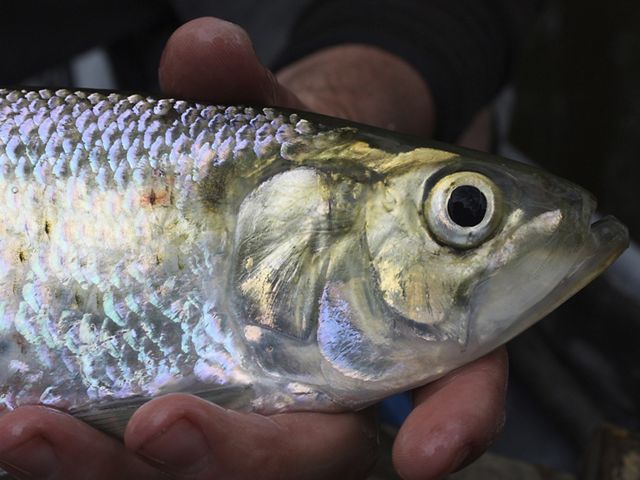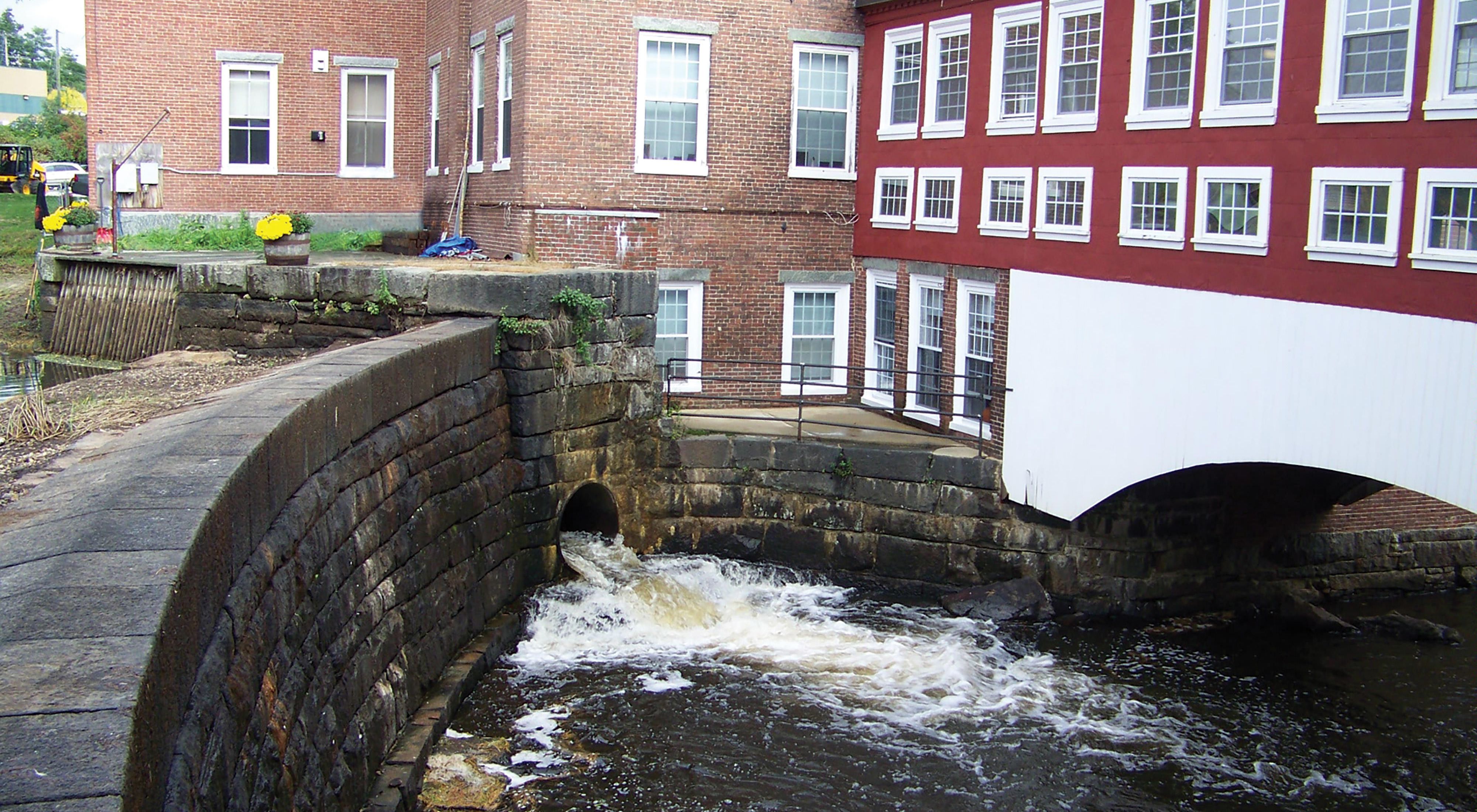
Stand on the catwalk spanning the Bellamy River in Dover’s historic Sawyer Mill and the sight below defies logic: an entire river flowing through one pipe only a few feet wide. It’s the single outlet for water moving past the mill’s upper dam before it flows under the centuries-old building—now an apartment complex home to hundreds of residents—over the mill’s lower dam and out to the Great Bay Estuary. Behind the upper dam sits tons of trapped sediment (about 104,000 cubic yards, or 5,200 dump trucks full), unable to move naturally downstream. Should the region experience a major storm similar to those that triggered the Mother’s Day floods in 2006, high water could damage both the catwalk and lower level apartments. Below the lower dam, sea-running fish like alewife, blueback herring and American eel meet a dead end on their way upriver to complete their life cycle—a barrier they’ve faced since the first dams were constructed in the Bellamy to power saw mills providing timber to the British Crown as early as 1650.
Soon, the Bellamy River will flow freely again in this part of town for the first time in more than 360 years—a win for both people and nature—thanks to a monumental effort by the New Hampshire Department of Environmental Service’s Coastal Program to assist the owner with the removal of both the upper and lower dams from the Sawyer Mill complex. Supported by The Nature Conservancy and partners—including Sawyer Mill Apartments, New Hampshire Fish & Game, National Oceanic and Atmospheric Association (NOAA), U.S. Fish & Wildlife Service and others—the $2 million project is well under way, with actual removal of the structures occurring in summer 2018.
The Trouble with Being “First”
Tucked away from the public eye and visible only to those living in Sawyer Mill, at first glance the dams seem picturesque with their old granite walls and the soothing sound of falling water. But the current structures possess a not-so-hidden danger: an inadequate spillway that could spell catastrophe should a severe flooding event occur. “These dams are incompatible with the way we use this facility now,” says Kevin Lucey, restoration coordinator for the New Hampshire Coastal Program. “They are structurally connected to a residence housing hundreds of people. Failure in this instance could mean loss of life.”
In addition to public safety concerns, the dams pose several threats to biodiversity. A detailed analysis conducted by The Nature Conservancy of dams from Maine to New Jersey consistently ranks Sawyer Mill as one of the top priority dam sites for improving diadromous fish passage and connectivity. The Northeast Aquatic Connectivity Assessment’s ranking also reflects the fact that this is a “first” dam: It’s the first barrier fish will encounter when moving from saltwater into suitable breeding habitat. By removing the dams at Sawyer Mill, migratory fish like river herring, sea lamprey and American eel will gain access to another mile of upstream habitat—access they have struggled to reach for more than three centuries! Meanwhile, restoration of more natural water flow will improve the movement of sediment and nutrients downstream, enhancing habitat for fish and oyster reefs, improving conditions for salt marsh grasses, allowing wetland vegetation to regain a foothold in areas that were previously flatwater and stagnant, and increasing the overall water quality of the Bellamy River, a waterway currently considered “impaired” under the Clean Water Act.
The Power of Partnership
Both the upper and lower dams—originally constructed in the 1800s—were classified as “high hazard” by the New Hampshire Dam Bureau. Neither have the ability to safely pass 250 percent of the volume of water from a 100-year flood, endangering structures and habitat downstream should such an event occur. To get the dams up to snuff, their owner, Paul D’Orazio, had to make a choice: undergo costly modifications to the structures or have them outright removed. Deeply in tune to the river, the nature it supports, his beloved mills and those that call them home, D’Orazio knew that removal provided the greatest benefit to all and turned to the Coastal Program for help.
The dams at Sawyer Mill are just one example of the many relic dams being modified or removed in New Hampshire and across New England to restore natural river flow, optimize fish passage, and reduce risk to people and property. It is no small feat to retire dams—it requires funding, study, mitigation measures and community support. By helping NHDES and the Coastal Program move this project forward, we are leveraging the strengths of our partners to advance our vision to re-connect, restore and sustain fresh waters in the Granite State and ensure that they will continue to safely support the people, plants and animals that depend on them.
